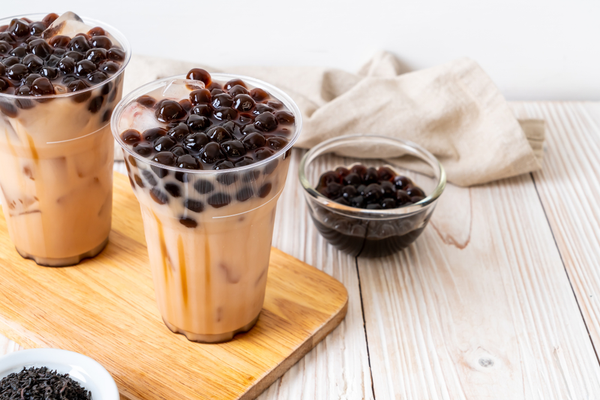Current ways of eating of most Vietnamese people
Rice, noodles and bread have become the stables in Vietnamese cuisine as well as in many other countries’. It’s very easy to bump into them anywhere on the streets and in the supermarkets. Local people have eaten these forms of carb for decades and used them as the main sources of energy. Most, however, don’t understand the detrimental effects their diets undermine.

A normal blood glucose (or blood sugar) is considered to be from 80 to 140 mg/dL, which roughly equates to about 5.5g or a little more than a tea spoon of sugar. However, a typical person consumes many times that amount. For instance, based on the current dietary guidelines, one should eat 80 – 100g of carb per meal, about 18 times the normal blood sugar. Moreover, if you are a body-builder, then your recommended carb intake should fall anywhere from 150 to 200g, a whopping 36-time multiplier.
Let’s consider a wildly beloved drink in Asia, milk tea! Even when the drink is sugarless (as many believe is “healthy”), the pearls made of tapioca starch in each cup can deliver 40 to 60g of carb, about 10 times the normal blood sugar.

To make matter worst, carbs and sugar can sneak into the diet in many other ways. They can be found in seasoning in the form of sugar, premade seasoning powder, sauces, marinates, MSG, condensed milk, and the so-called healthy fruit juices.
Carbohydrate metabolism 101
Think about carbs or sugar as a chain. In wholefoods, they exist mainly as complex multi-link chains and sometimes wrapped around other things, like fibers. In the body, these chains get broken down into shorter and simpler chains, and eventually into single-link chains. The longer and more complex the chain, the longer it takes to get broken down, and vice versa. The two main single-link chains the body uses are called glucose and fructose.
Glucose can be found pretty much everywhere, especially in abundance in rice, noodles, quinoas, pastas, bread, cereal, potatoes, and other starchy tubers. These glucose molecules get absorbed directly into the bloodstream through the wall of the small intestine, causing a spike in blood sugar. Then they get delivered into cells throughout the body and metabolized for energy and other things.
Fructose, or fruit sugar, as the name suggest, can be found in fruits, fruit juices, honey and soft drinks. Unlike glucose that can be used by almost all cells in the body, fructose has to be converted into glucose in the liver before getting used by other cells. These extra steps are the reason, fructose (and fructose-containing food) doesn’t affect blood sugar as fast as does glucose. This makes many people believe that consuming fructose-rich food, like fruits and fruit juices, are healthy and better for diabetes and general consumers.

















